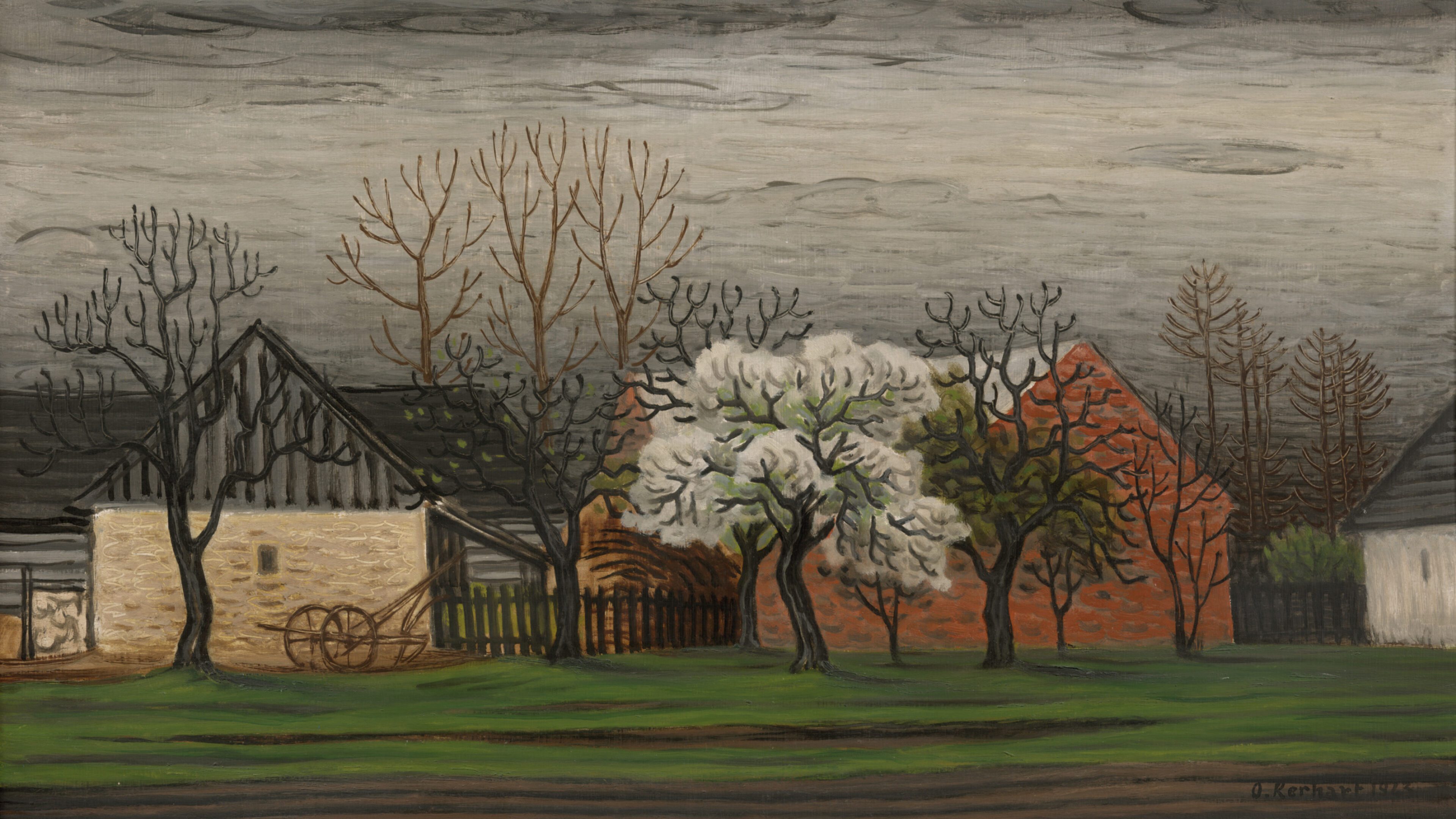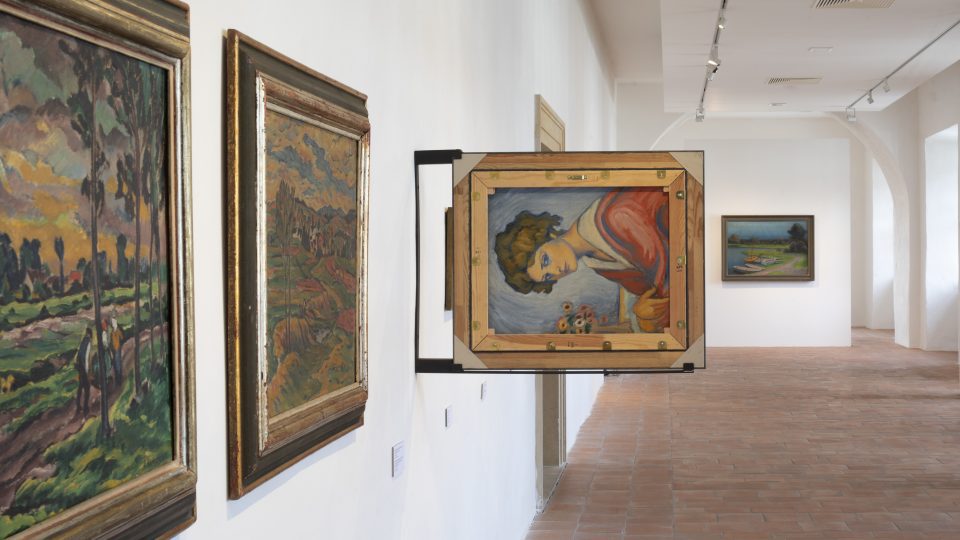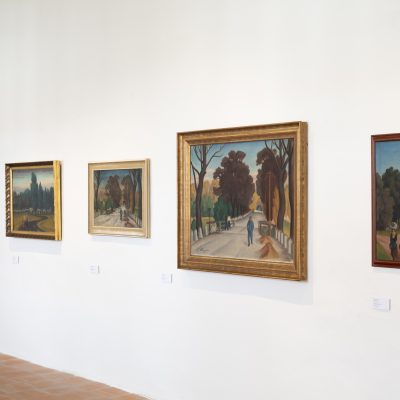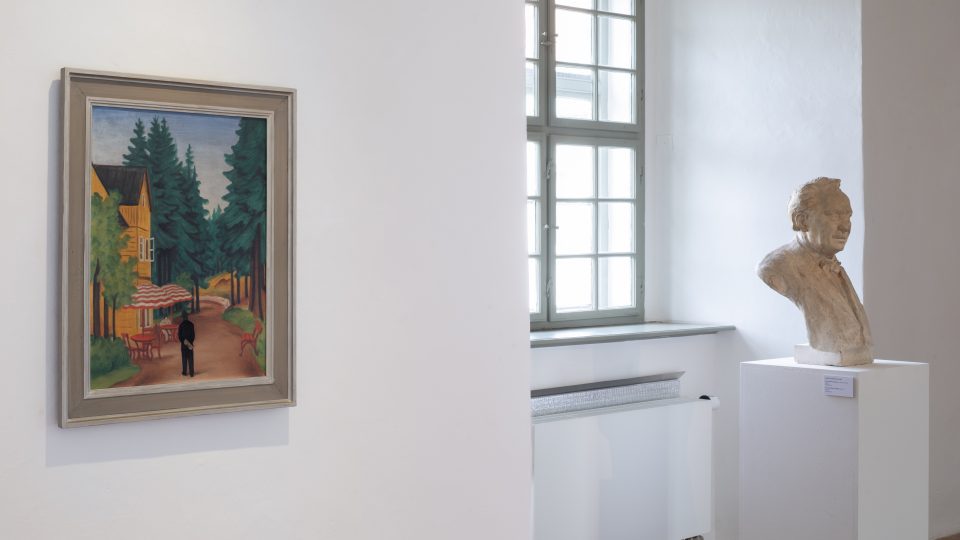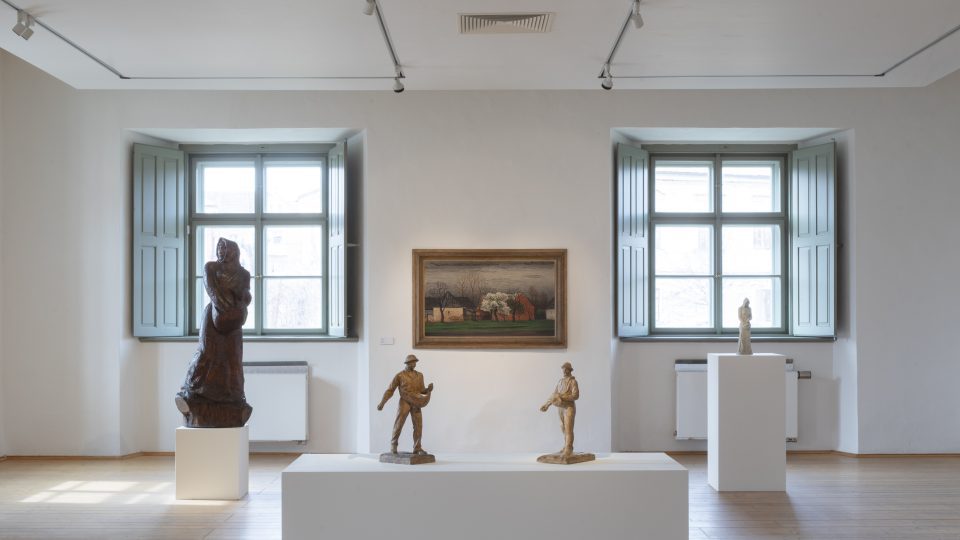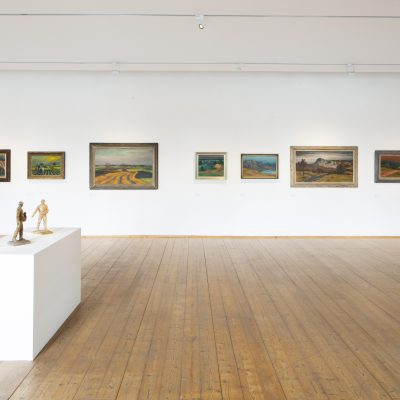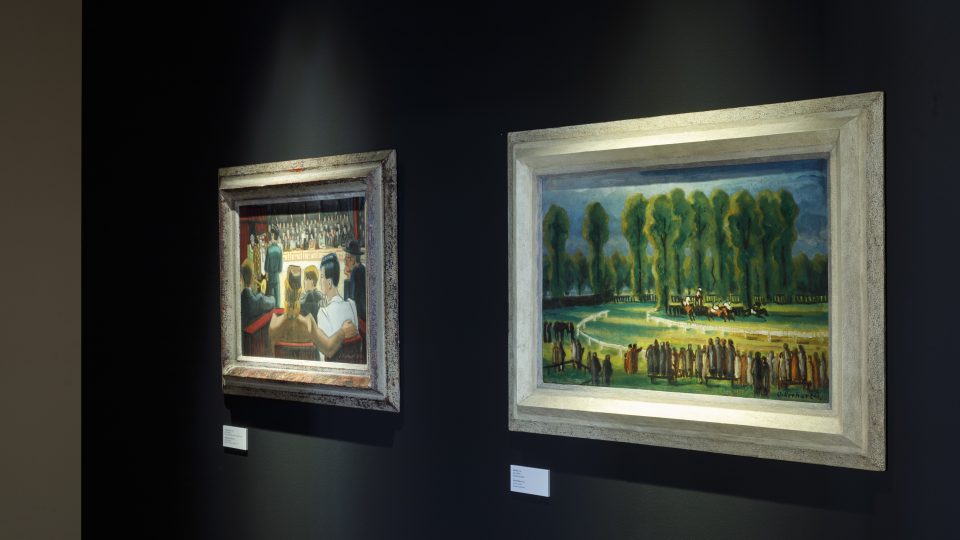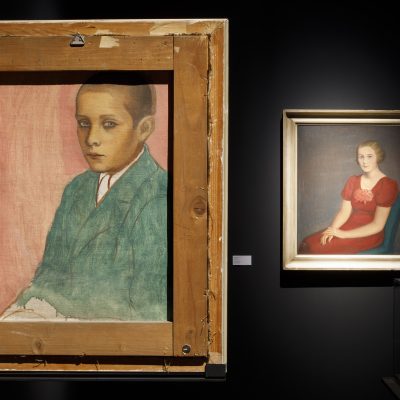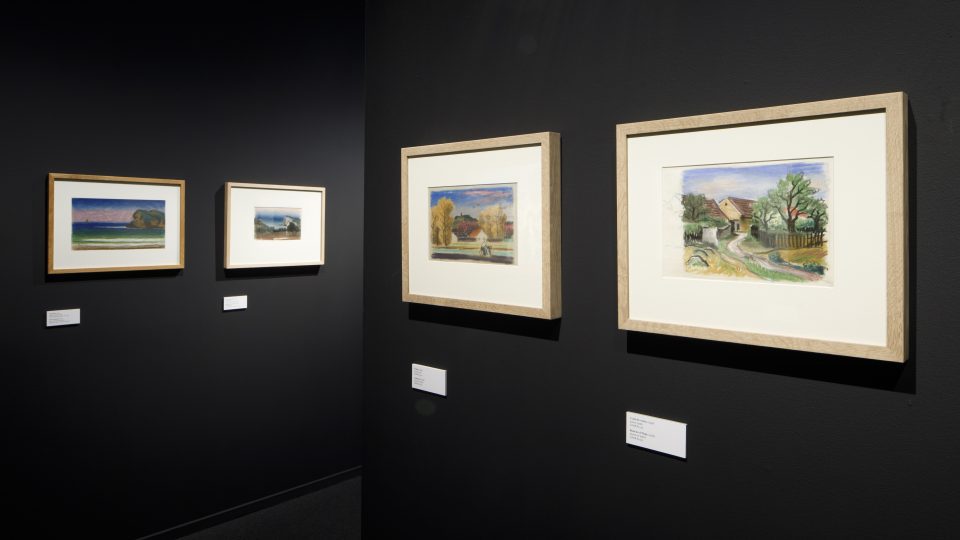The life and work of Oldřich Kerhart (1895–1947), a painter, draughtsman, printmaker, editor and teacher, have their roots in his native town of Poděbrady. The tranquil countryside of the Elbe region of central Bohemia, where he grew up and which he often painted, was echoed in the artist’s own thoughtful and harmonious character. Kerhart’s notion of the landscape – whether Czech or southern European – can be summed up in the words that art historian Antonín Friedl wrote in 1942: ‘It is both serious and lyrical, prosaic and romantic.’
The exhibition at GASK seeks to highlight an unjustly overlooked figure of 20th-century Czech art whose work is intrinsically linked to the democratic cultural and civic values of the First Czechoslovak Republic, doing so in the region where he was, in every sense, ‘at home’. At a time when issues of personal and national identity are being intensively addressed, this exhibition is also intended in a broader sense as a contribution to
reflections on what, in connection with the Czech landscape, Josef Čapek described in 1937 as ‘the fundamental life of the nation’.
